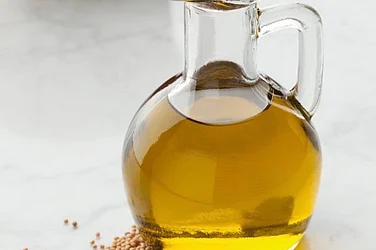The Union Budget 2021 shows significant shortfalls in spending the outlays earmarked for Department of Agriculture, Cooperation and Farmers' Welfare in the last two years, 2019-20 and 2020-21. Out of the budgeted outlay of Rs. 1.30 trillion (BE) for 2019-20, the actual spending was only Rs. 94,251 crore (Actuals). In 2020-21, out of Rs. 1.34 trillion (BE) total budget outlay, only Rs. 1.17 trillion (RE) has been spent. The outlay for 2021-22 has also been downsized to Rs. 1.23 trillion (BE), including a Rs. 10,000 crore cut in the allocations for the government's flagship scheme, PM-Kisan.
There are no increases in the outlays on any of the existing central sector schemes on agriculture, including that on crop insurance, or those centrally sponsored schemes transferred to the States like on irrigation, the RKVY or the food security mission. Rather, while allocating Rs. 900 crore for the newly created Agricultural Infrastructure Fund for 2021-22, there has been a cut of Rs. 1,700 crore on the interest subsidy scheme for farm loans. The outlay on the market intervention and price support scheme MIS-PSS has also been cut by Rs. 500 crore for 2021-22. These do not signal any commitment towards enhancing state support to agriculture in future.
The food subsidy bill has of course witnessed a sharp increase of over Rs. 3 trillion in 2020-21 over and above the budgeted outlay of Rs. 1.15 trillion (BE), but that increase is on account of discontinuing with off-budget NSSF loans to the FCI and bringing those expenditures transparently under the food subsidy head. Both food and fertiliser subsidies, which witnessed sharp increases in 2020-21, have been cut down quite drastically for 2021-22.
Union Finance Minister Nirmala Sitharaman claimed in her budget speech that the government has spent Rs. 2.47 trillion in 2020-21 in procuring paddy and wheat at MSP, benefitting around 43.3 lakh wheat farmers and 1.54 crore paddy farmers. The data provided in the Annexure to the budget speech makes it clear that the total farmer beneficiaries of the government's procurement operations, including crops like cotton, jute, pulses and oilseeds, besides wheat and paddy, would not exceed 2.2 crore.
The PM Fasal Bima Yojana provided coverage to 5.76 crore farmers in 2018-19, the last year for which annual data is available. 2.15 crore farmers directly benefited from the crop insurance scheme that year. The Economic Survey cites only 70 lakh farmers benefiting from the PMFBY during the lockdown period.
Now, compare these with the 9.43 crore farmers across the country who received Rs. 2,000 each in their bank accounts in December 2020 as the seventh instalment of the PM-Kisan scheme. These are small and marginal farmers who own less than two hectares of land, who have registered under the central scheme. As per the last Census of 2011, India had 11.8 crore cultivators and 14.4 crore agricultural labourers. A significant section of the cultivators, who are tenant farmers, and almost the entire lot of agricultural labourers, do not own any land. Therefore, these landless farmers cannot get themselves registered under any government scheme.
With official procurement directly benefitting 2.2 crore farmers only, it is clear that an overwhelming majority of the small and marginal farmers, especially those who are landless, tenant farmers or labourers, are untouched either by the procurement process or other government schemes. Hence, bulk of them sell their produce way below the MSP, earning returns which hardly cover their cost of production, making them vulnerable to debt traps and other forms of economic distress. Lack of non-farm employment opportunities also force them to remain trapped in a low-level equilibrium. An understanding of these ground realities of Indian agriculture would immediately dissuade any policymaker from making any grand claims of achievement.
Doles of Rs. 6,000 per family per annum under PM-Kisan can barely succeed in raising farmers' incomes beyond the mere survival threshold. Despite such vulnerabilities, the fact that agricultural growth has remained over 3% in 2020-21 when the overall economy has tanked under the impact of Covid-19 pandemic and lockdown, should be seen as a stroke of good luck for the government.
Unfortunately, rather than rewarding the farmers, the government has ended up antagonising them by enacting the three farm laws in 2020, which has caused widespread apprehension regarding the weakening of official procurement at MSP and erosion of the APMC markets, paving the way for the dominance of the agriculture sector by large corporate players. The severe dilution of stockholding limits on essential commodities have further stoked fears of big corporate takeover of agricultural marketing.
Budget 2021 contains nothing to allay those fears and assure the farmers of continued and enhanced state support, which can improve their incomes.
(Prasenjit Bose is an economist and activist based in Kolkata)
















